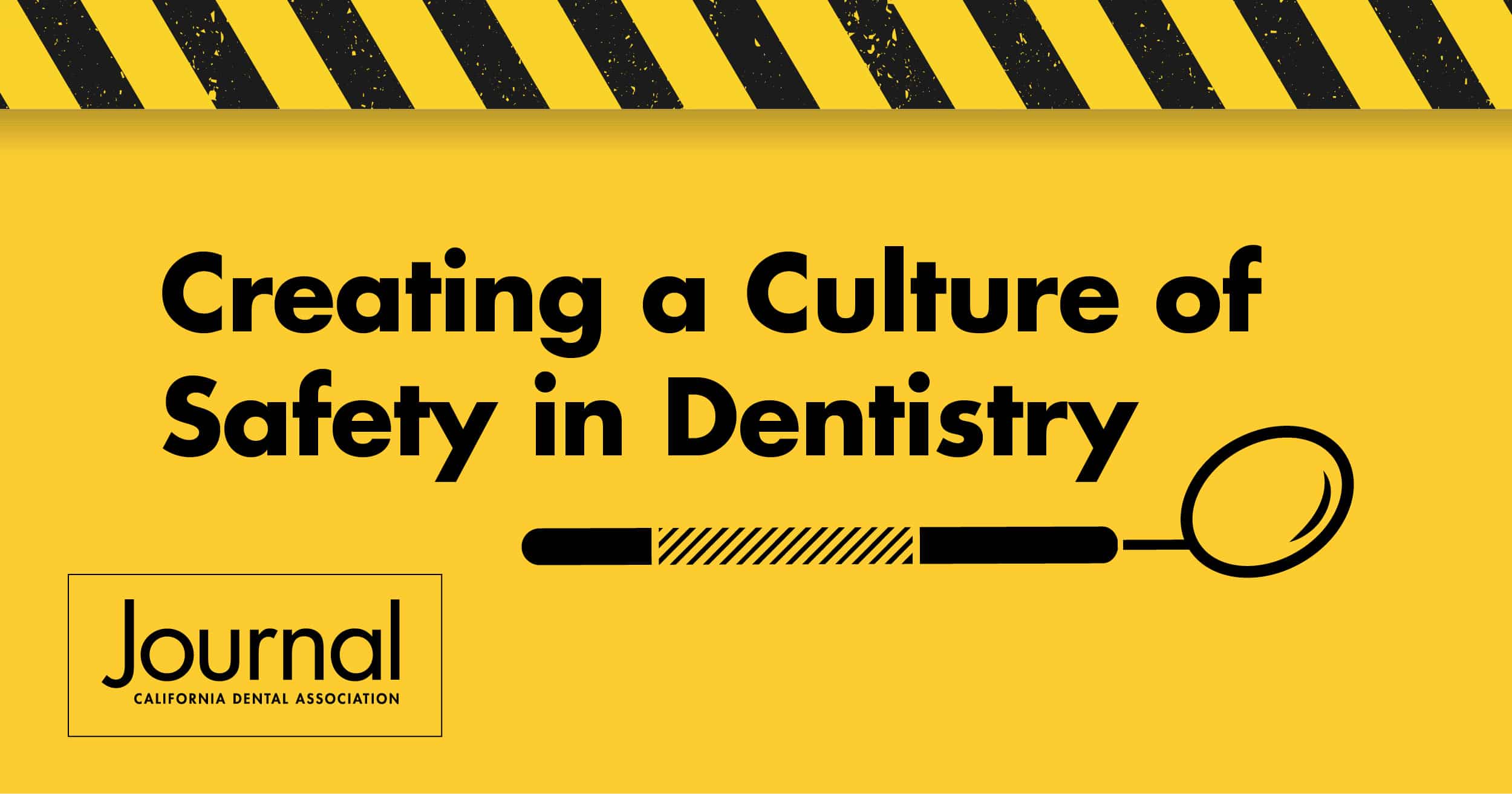“By and large, the practice of dentistry is safe, but there are instances where near misses or adverse events do occur,” write Steven P. Geiermann, DDS, and Eve Cuny, MS, in the introduction to the CDA Journal collection Quality Improvement and Risk Management Within a Culture of Safety in Dentistry. The hope, they add, is that dental teams can learn from them with little to no lasting harm to patients, staff or providers.
This collection of articles is intended as a “catalyst for dental teams” to take immediate steps toward offering patients the safest dental visit. Articles invite dental teams to examine their current approaches to identify areas needing improvement and to begin employing individual and systemic practices to develop and advance a culture of safety.
Safety and risk management: Opportunities for improvement
In 2022, the average reported dentist malpractice payment was $113,188, according to online data cited in the article “Elevating the Conversation: Safety and Risk Management in Dental Practice.”
Author Ronald R. Zentz, RPh, DDS, reviews the status and recent past of patient safety and risk management in dentistry and presents dental professionals with opportunities to mitigate risk through education, training, career expansion and work culture development based on open communication and constructive feedback.
“Choose one protocol or technique that your team can implement tomorrow, choose three protocols or techniques (or more) that your team can implement in the coming year,” Dr. Zentz concludes.
Dentists can earn .5 units C.E. credit by reading the article and successfully completing an online quiz.
Quality improvement in integrated health care settings
Dentistry remains about two decades behind medicine in addressing quality and safety, according to research cited by author Paul S. Casamassimo, DDS, MS, in the article “Dental Quality Improvement in an Integrated Health Care Setting: Pedal Faster.” Professional resistance, an absence of financial incentives to change, a perception of few adverse events in dentistry and lack of consumer pressure likely add to the slow pace toward quality measurement, he posits.
Using as an example the challenges faced by a dental department in a comprehensive hospital system that is already committed to quality improvement, Dr. Casamassimo illustrates how dental practices can implement measures specific to hospitals and other institutions to educate staff and establish a discipline-specific continuous quality improvement program.
Effective and accountable response to problems in the dental practice
“While most dentists are committed to responding to problems with transparency and accountability, turning these principles into practice can be difficult,” write Kerry R. Streiff, DDS, Thomas H. Gallagher, MD, MACP, and Julie Morath, RN, MS, in “Responding to Problems in Dental Practice with Transparency and Accountability.”
They discuss how the structured communication and resolution programs that are commonly used in the field of medicine can support dentists’ responses to patient safety events.
Dentists will learn practical solutions they can apply now both to reduce the chances of harmful events occurring during patient care and to be better prepared to respond effectively when they do occur.
Systems thinking in dentistry and scientific dentistry news
Also on this collection’s theme are “An Introduction to Systems Thinking and its Application to Dentistry” and a letter to the editor, “Patient Safety — A Sound Business Decision.”
Other Journal articles include Impressions — curated scientific news of interest to dental professionals and the oral health community — and the CDA Student Table Clinic Awards.
Read the CDAJournal collection.

